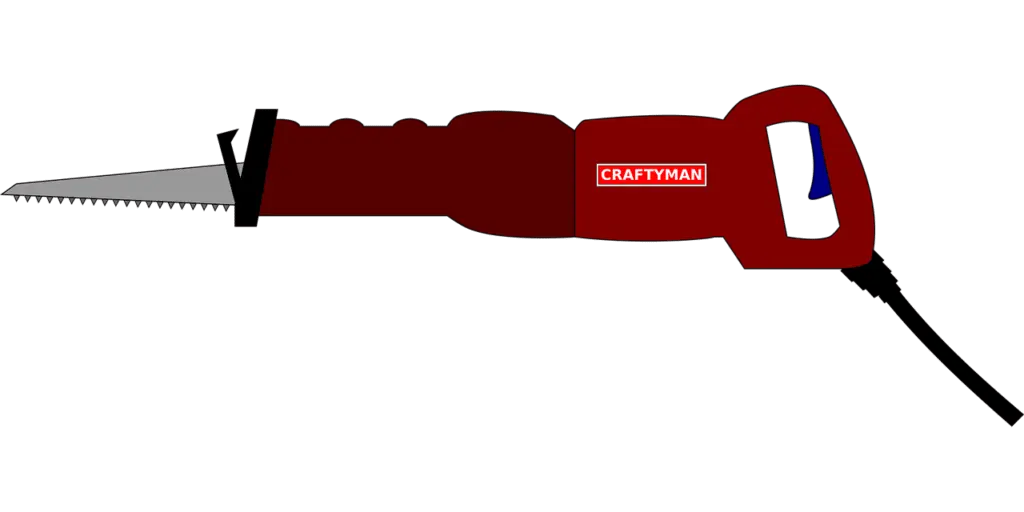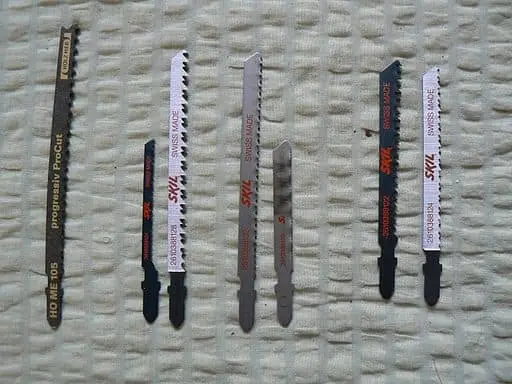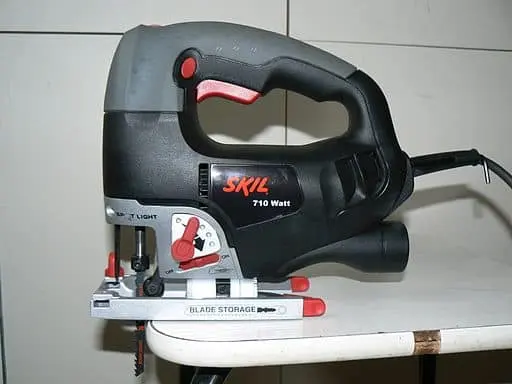Wondering what the difference between a jigsaw and a reciprocating saw is? In the reciprocating saw, this kind of tool is known to many by different names such as Recipro saw, saws-all, and saber saw. The Milwaukee brand coined the term “sawz all.” Whatever name you choose to call the tool. This powerful tool in question can cut through wood, metal, masonry, fiberglass, and many other materials.

A key point to remember is that this is a vital tool for many contractors. And a lot of DIY workshops globally. To them, this tool is the everyday handyman’s weapon of mass deconstruction.
Sounding a lot like a phrase from one of Arnold Schwarzenegger. Reciprocating saws come with a powerful motor and are usually used to cut quickly and cut deep when needed. The primary question is, how is a reciprocating saw diverse from other saws?

According to my research, using simple English, a jigsaw is another type of reciprocating saw. The main difference is that technically, the jigsaw and Recipro saw are different saws. Very confusing, I know, but since, in reality, they do about the same thing in terms of work, they can be considered interchangeable. This article will lay out the differences between the two saws.
The jigsaw power tool.
The jigsaw is a good choice and offers the cutting power needed for cutting, especially for many craft and construction projects. The jigsaw is not only capable of making straight and curved cuts. It is a versatile saw that can make cross cuts, parting cuts, diagonal cuts, and plunge cuts. You can use it in wood, light metals, plastic, ceramics, and drywall materials.
Every jigsaw can handle several cutting projects but bear in mind that each saw may offer a different set of features that may or will better suit the individual who will use it for specific applications. For example, let’s say you are using your jigsaw for maybe scroll cuts or crafting, and you may want one that has a knob-style kind of auxiliary handle capable of producing precision cutting and steering control.
Another critical point is that if you need to use this tool primarily for a straighter cut, you should look for a built-in laser line to maximize efficiency. The other option you may be happy to find on the jigsaw includes the anti-vibration, which boasts precision cutting. The saw also comes with a dust collection port to maintain a cleaner cut as you work and built-in lights for greater visibility. The jigsaw also comes with handles that offer a more comfortable grip for greater comfort and reduced fatigue.
Reciprocating Saw
This is the most commonly used saw for construction, plumbing, and electrical work. Reciprocating saws, also known as Recipro saws, saber saws, or even saws, are more linked to a demolition-styled saw mainly used to cut down the material. They are known to deliver a lot of power to the blade, enabling the saw to slice quickly through materials such as metal, masonry, ceramic, wood, fiberglass, stucco, and drywall, and not forgetting composites.
Please look at its power capabilities for those interested in using the reciprocating saw for demolition work. The Cordless model version of the saw tends to lose power as the battery drains. However, most believe that the corded saw remains reliable and consistent throughout the job, with an unlimited run time. The corded reciprocating saw has a range of fewer than five amps to 15 amps or even more. A reciprocating saw with ten amps can provide optimal power for heavy-duty use.
Reciprocating saw vs. Sawzall
The majority of the people have been asking if there’s a difference between reciprocating saw and Sawzall. The answer is No. Sawzall is the brand name of the reciprocating saw made by the one and only Milwaukee Tool Company. The saw was invented a few decades ago, around 1951. Better known as a revolutionary tool, the saw was claimed to be the first portable electric hacksaw, as stated by the Milwaukee site, which I am sure they are very proud of. Back to today’s future, the name Sawzall has, over time, been made into what most would consider a more of a colloquial term. In turn, this has become a household name that means reciprocating saw in general.
The reciprocal saw uses.
A reciprocal saw is a versatile tool that you can use in so many different ways it’s pretty fascinating. An example, a tear-down project that would typically take, let us say, many hours of literally blood, sweat, and tears, yes, grown men are allowed to sit down and cry, to rip down and break apart with a crowbar, has been made so much easier with a reciprocal saw. The saw can tear down windows, walls, plumbing, and doors. The list is endless. It’s so easy with a reciprocating saw, and one might say just cut away and toss.
You also will wonder where this enchanted little tool has been all your life. This is what one will own when they finally graduate to be a Serious DIY person. Let’s not forget the times they would have been around the hard knocks block before getting the promotion. This very tool sets you apart from what we can call the novice or wannabes. The reciprocating saw is not really for fine crafting. Its primary use is for breaking down and tackling the bigger projects at hand. The saw was designed to get into those tight areas with an exposed blade and different positioning for precision angle cutting.
Understanding the jigsaw
The jigsaw, or as some call it, the saber saw, is another version of the reciprocating saw. The only difference is that the jigsaw is more for delicate work, while on the other hand, the reciprocating saw is more for demolition work. Reciprocating saw blades were designed for a more horizontal kind of action for rough, multiple angle cutting to rip and tear-away material fast work. The Jigsaw offers more flexibility and can easily cut straight or curved designs. We do not forget as well as crosscuts, ripping, bevelling, and purge cuts.

The saw is known to do more precision work that comes with longer and slimmer blades that will emulate the work of a jigsaw. With that being said, note that there are different crossover blades for the reciprocating saw. They are labeled as reciprocating or saber saw blades. They are made out of high carbon steel, bimetal, or tungsten carbide for cement board, brick, and concrete. These blades are found in different shapes, thicknesses, and teeth per inch.
Jigsaw blades – benefits
As mentioned already, the jigsaw has a narrower and more fragile blade. This then means they are more suited for precision cutting. There are some things you can do with a jigsaw, including but not limited to crosscutting, plunge cutting, bevelling, and ripping.
A jigsaw blade can come in various styles to better suit the material you want to cut. Generally, the blades can cut through wood, ceramic, light metals, and plastics. The Jigsaw blade can as well cut through drywall plus ceramic tiles. This, in turn, can be an alternative to being one of the best-wet tile saws. In summary, the jigsaw is intended for function and adaptability.
Reciprocating saw – benefits
Reciprocating saw blades are considered to be very strong and thick. Since a reciprocating saw has more powerful motors, it can cut through materials faster. The blades were made to come across as rough cutters strictly for demolition work.
It makes sense that the reciprocating saw is commonly used in construction, plumbing, and electrical works. The serrated knife-like blades of the saw can cut through anything that is stone, ceramic tiles, metal, wood, fiberglass, stucco, and drywall.
Reciprocating Saw vs Jigsaw Verdict
Reciprocating saws and jigsaws are similar and different, and it all comes down to what you want to use them for. Each saw has its strengths and weaknesses but makes sure you choose the right tool for the job lest you are left disappointed for a long time. For me, the jigsaw remains undefeated, hands down.
- Grain and Sheen: Teak Oil versus Danish Oil Uncovered - January 10, 2024
- The Cherry on Top: Crafting the Perfect Cutting Board - January 9, 2024
- Polyurethane Water-Based vs Oil-Based: Choosing the Right Finish - January 8, 2024